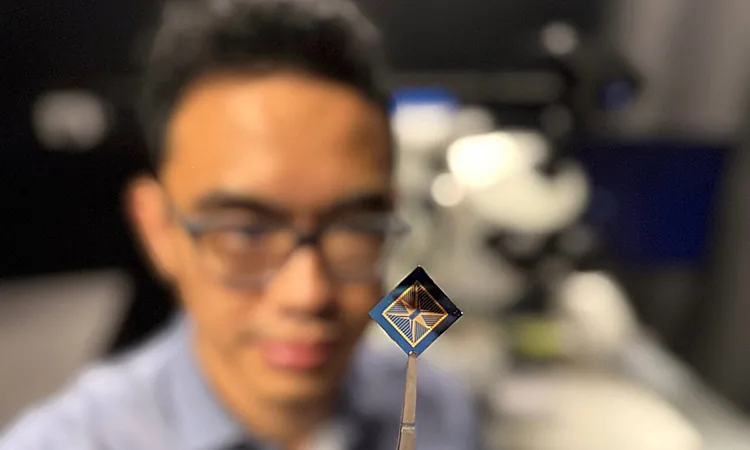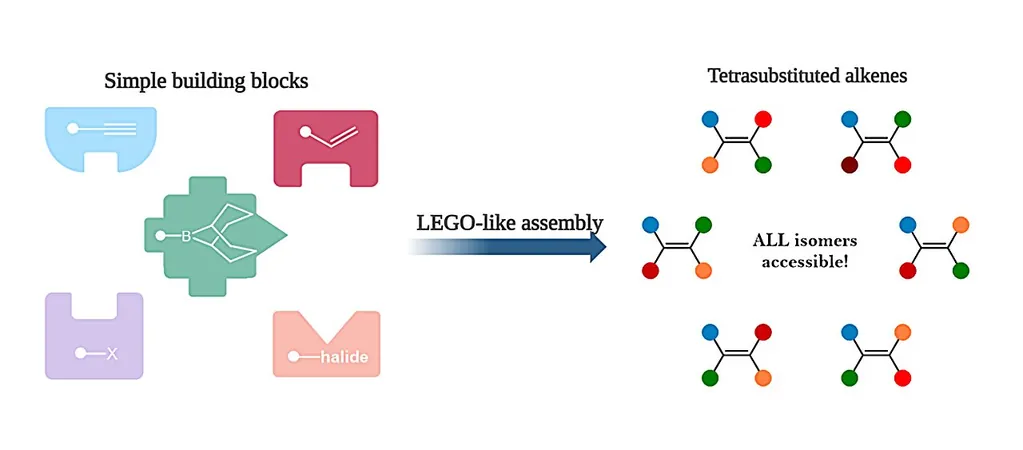
Revolutionary Mini Device Mimics Human Brain for Instant Visual Processing
2025-05-12
Author: Mei
A Breakthrough in Neuromorphic Technology
Engineers from RMIT University have unveiled a groundbreaking neuromorphic device that processes hand movements and captures visual memories in real time, operating independently of external computers. This innovative technology promises to revolutionize how machines interact with their environment.
Transforming Visual Processing Automation
According to Professor Sumeet Walia, the team's leader, this device ushers in a new era of instantaneous visual processing, which is vital for autonomous vehicles, advanced robotics, and enhanced human-technology interactions. Walia, who oversees RMIT’s Center for Opto-electronic Materials and Sensors, emphasizes the energy efficiency of neuromorphic systems that mimic human brain functions.
Harnessing Cutting-Edge Materials
Central to the device's function is molybdenum disulfide (MoS2), a metal compound that mimics neuron activity. The research team demonstrated that atomic-scale imperfections in this compound can effectively capture light and convert it into electrical signals, similar to how our brains operate.
Instant Environment Awareness
The device showcases its capabilities by tracking the motion of a waving hand without frame-by-frame data capture—a process known as edge detection. This innovative approach reduces the need for extensive data processing, allowing the device to create memories effortlessly.
From Theory to Reality
In their experiments, the team confirmed that this technology can function within the human-visible spectrum, expanding on prior work in the ultraviolet range. The device not only mimics the human eye and brain functions but also allows for the resetting of memories, preparing it for new tasks at any moment.
Game-Changing Applications Ahead
The implications of this technology are profound. With further development, it could significantly enhance the responsiveness of autonomous vehicles and advanced robotic systems, especially in hazardous situations. As Walia states, neuromorphic vision could enable immediate scene change detection, drastically improving safety.
Future Steps and Optimizations
Now, the RMIT team aims to scale their single-pixel device into a larger array of MoS2 components. While they have made impressive strides in mimicking brain processing, there is still work to be done to refine these systems for complex visual tasks. The goal is to create hybrid systems that combine the best of neuromorphic and traditional digital technologies.
A Complementary Future
Professor Walia envisions these advancements as a complement to conventional computing, emphasizing that while traditional systems excel in many areas, neuromorphic technology offers unprecedented advantages in energy-efficient visual processing and real-time operational capabilities.



 Brasil (PT)
Brasil (PT)
 Canada (EN)
Canada (EN)
 Chile (ES)
Chile (ES)
 Česko (CS)
Česko (CS)
 대한민국 (KO)
대한민국 (KO)
 España (ES)
España (ES)
 France (FR)
France (FR)
 Hong Kong (EN)
Hong Kong (EN)
 Italia (IT)
Italia (IT)
 日本 (JA)
日本 (JA)
 Magyarország (HU)
Magyarország (HU)
 Norge (NO)
Norge (NO)
 Polska (PL)
Polska (PL)
 Schweiz (DE)
Schweiz (DE)
 Singapore (EN)
Singapore (EN)
 Sverige (SV)
Sverige (SV)
 Suomi (FI)
Suomi (FI)
 Türkiye (TR)
Türkiye (TR)
 الإمارات العربية المتحدة (AR)
الإمارات العربية المتحدة (AR)